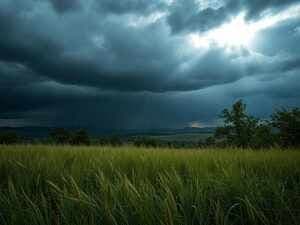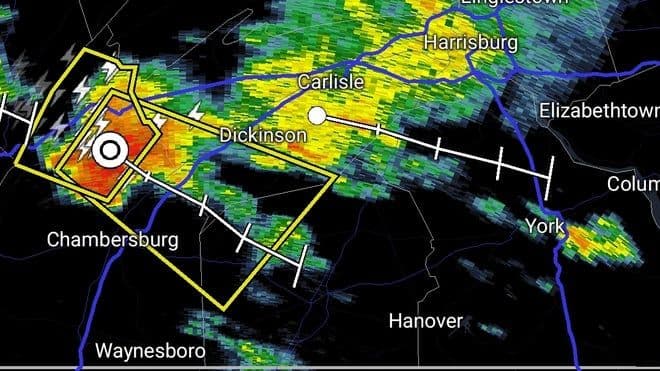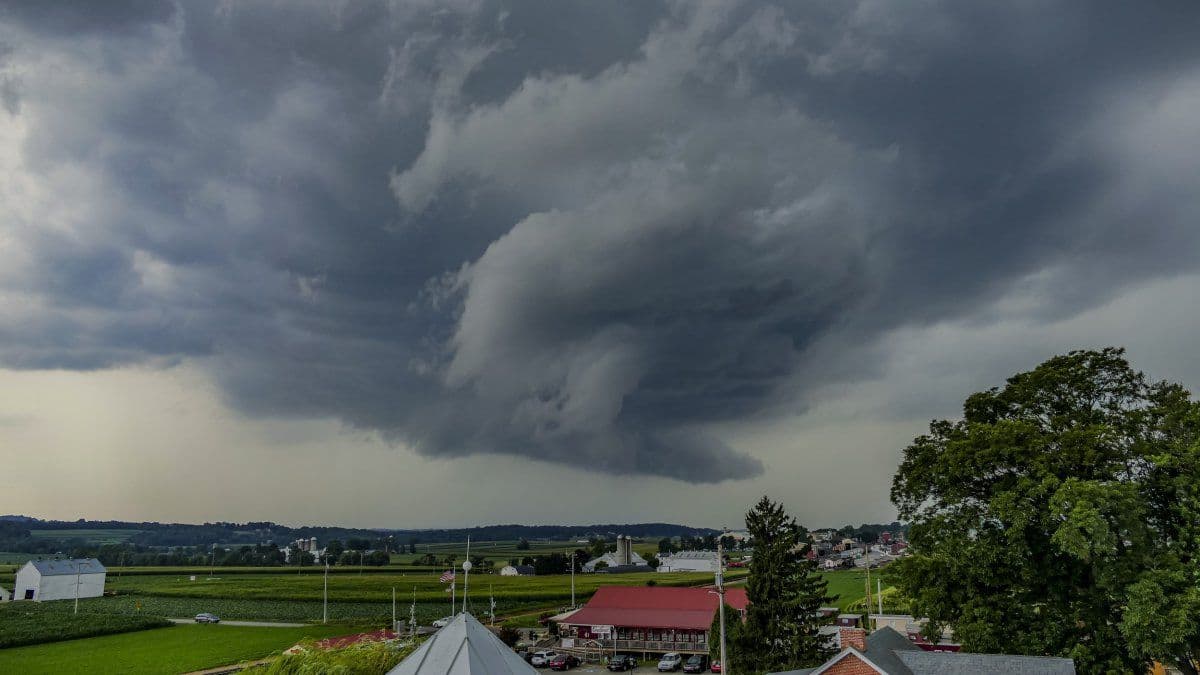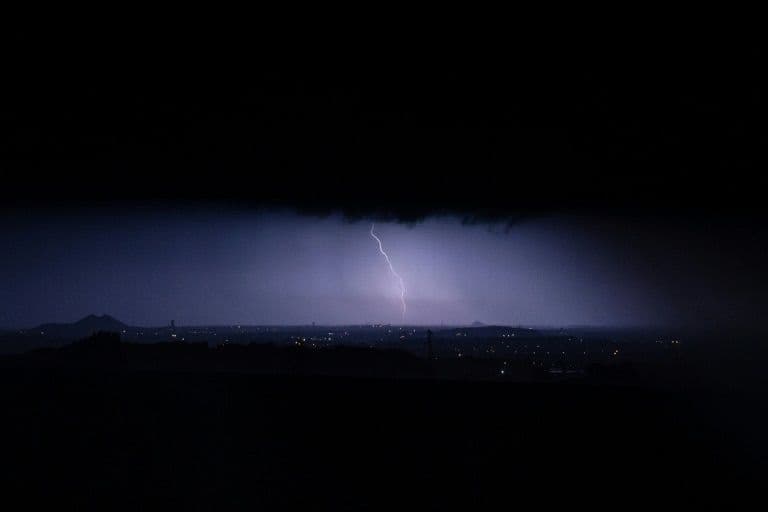Nature's Urgent Whisper: Mastering the Minutes Before a Severe Thunderstorm Strikes
Decipher urgent storm warnings. Learn critical immediate actions & long-term preparedness to protect your property & family from severe thunderstorms' hidden dangers.
Decoding the Alert: What a Severe Thunderstorm Warning Truly Signals
When the issues a Severe Thunderstorm Warning, it's more than just a heads-up about bad weather; it's an urgent call to action, signaling that hazardous conditions are imminent or already occurring. Unlike a 'watch,' which means conditions are favorable for severe storms, a 'warning' indicates a direct and immediate threat to life and property. For instance, in a recent event, the in issued a warning specifically for a storm near . This wasn't a vague forecast; it pinpointed the hazard: damaging high winds and hail, specifically described as 'penny-sized.'
What does this precision mean for you? It means the storm isn't just bringing rain; it carries winds strong enough to snap large tree branches or even topple entire trees, posing significant risks of property damage and personal injury. The warning identified specific areas like and as being directly in the storm's path, highlighting the localized and immediate nature of the threat. These warnings are time-sensitive, often issued for short durations, like the 3:31 p.m. warning set to expire around 4 p.m., or the earlier one at 2:31 p.m. that expired by 3:15 p.m. Understanding these details transforms a general sense of unease into a clear understanding of the danger, urging prompt and decisive action.
The Critical Countdown: Immediate Actions When a Warning is Issued
Once a Severe Thunderstorm Warning flashes across your screen or blares from your weather radio, the clock is ticking. This isn't the time for 'wait and see' – it's the moment for immediate, decisive action. Your primary goal is to seek sturdy shelter and minimize exposure to the storm's direct impact. If you're indoors, move away from windows, which can shatter from powerful winds or flying debris. The safest place is an interior room, ideally on the lowest level of your home, or a basement if you have one. This provides layers of protection from falling objects or structural damage.
For those caught outdoors, the message is unequivocal: get inside immediately. Sheds, tents, and other temporary structures offer no protection against severe winds, large hail, or lightning. And critically, never seek shelter under trees. While they might seem like a natural canopy, they become dangerous projectiles or lightning rods during a severe storm, as the event underscored with its warning about falling branches. If you're in a vehicle, while it offers more protection than being completely exposed, it's still not ideal. Drive to a secure building if possible, and avoid parking directly under large trees or power lines that could fall, transforming your vehicle into a hazardous trap. These immediate steps are your best defense during the storm's brief, but intense, fury.
Beyond the Gust: Proactive Preparedness for Resilient Homes and Families
While immediate action during a warning is crucial, true safety and resilience against severe thunderstorms stem from proactive preparedness, long before the first rumble of thunder. It's about transforming reactive panic into informed readiness. Regularly checking forecasts from reliable sources like the ([www.weather.gov/ctp/]{.entity data-type="TECHNOLOGY"}) isn't just for today; it's a habit that keeps you aware of seasonal patterns and potential storm setups. Moreover, preparedness means identifying your safe spaces before a warning is issued. Do you know which interior room on the lowest level of your home is best? Is your basement clear and accessible? This pre-planning ensures there's no confusion or wasted time when a warning strikes.
Consider your outdoor environment too. Proactively trimming dead or weak tree branches around your property can significantly reduce the risk of property damage and injury from falling limbs, a direct threat highlighted in the warnings. Families should also establish a communication plan, ensuring everyone knows how to contact each other and where to meet if separated. Having an emergency kit with essentials like a first-aid kit, flashlight, batteries, and non-perishable food is another cornerstone of proactive resilience. It's not just about what you do when the storm hits, but the foresight and planning that allows you to face nature's power with confidence.
After the Fury: Assessing Impact and Ensuring Post-Storm Safety
Once the storm has passed and the immediate threat subsides, the next critical phase begins: assessing the impact and ensuring ongoing safety. Even after a warning expires, hazards can linger, often unseen. Resist the urge to immediately venture outside until you are absolutely certain the storm has moved on and conditions are truly safe. Check for obvious signs of damage, such as downed trees or power lines, which were a significant concern during the storms. Assume any downed line is live and extremely dangerous; never approach or touch it. Report such hazards to emergency services or utility companies immediately.
Carefully inspect your home for structural damage, especially to the roof, windows, and siding. Look for loose debris that could still pose a falling hazard. If you suspect any gas leaks, evacuate immediately and contact your gas provider. Be mindful of standing water, which could be electrically charged or hide submerged hazards. It's also wise to check on neighbors, especially the elderly or those who might need assistance. Document any property damage with photos or videos for insurance purposes. Remember, the 'all clear' from the weather service simply means the immediate severe weather has passed; a cautious and thorough assessment of your surroundings is essential for post-storm safety and recovery.
Dispelling the Myths: Separating Thunderstorm Fact from Fiction
In the face of powerful natural phenomena like severe thunderstorms, common misconceptions can sometimes be as dangerous as the storms themselves. It's essential to separate fact from fiction to ensure effective preparedness and safety. One prevalent myth is that 'only large hail is dangerous.' As the warning for 'penny-sized hail' indicated, even small hail can cause significant property damage, especially when driven by strong winds. Another common belief is that rubber tires offer complete protection from lightning in a car. While a vehicle does offer some protection due to its metal frame conducting lightning around the occupants, it's the metal shell, not the tires, that provides the safety. The safest action is still to seek a secure building, as the warning advised.
Furthermore, some believe that taking shelter under a large tree is safe during a thunderstorm. The truth, reinforced by expert advice, is precisely the opposite: trees are highly susceptible to lightning strikes and falling due to high winds, making them incredibly dangerous places to be. And the old adage, 'lightning never strikes the same place twice,' is simply false; lightning can and often does strike the same location multiple times. Understanding these distinctions, and relying on verified information from sources like the , empowers us to make truly informed decisions, transforming fear of the unknown into confidence born of knowledge and preparedness.
Related Articles

When the Sky Roars: Mastering the Critical Minutes of a Severe Thunderstorm Warning

When the Sky Roars: Mastering the Critical Minutes of a Severe Thunderstorm Warning

The Roar and the Radar: Navigating the New Era of Severe Thunderstorm Warnings

The Roar and the Radar: Navigating the New Era of Severe Thunderstorm Warnings

The Silent Scramble: Inside America's Race Against Lightning-Fast Storms

The Silent Scramble: Inside America's Race Against Lightning-Fast Storms

Beyond the Thunderclap: Unpacking the Silent Dangers of Hailstorms
